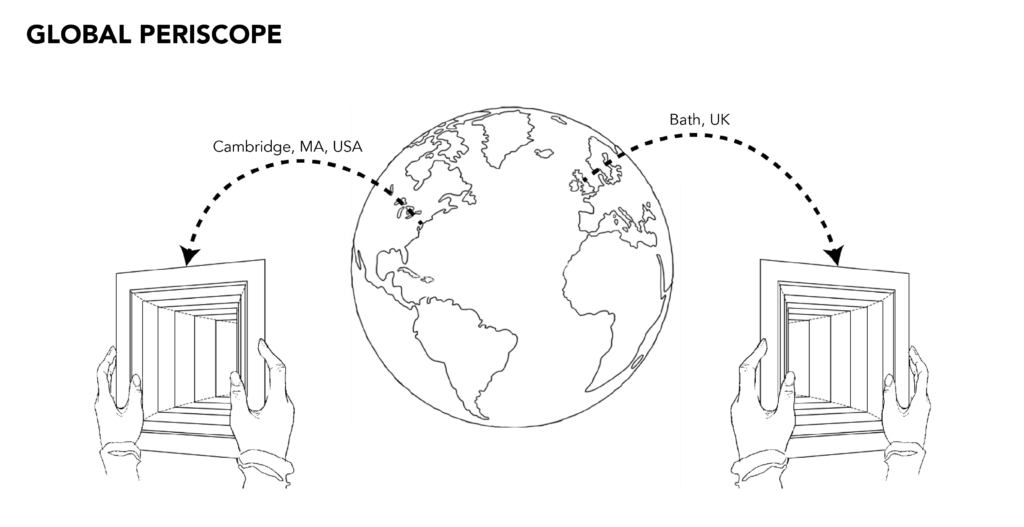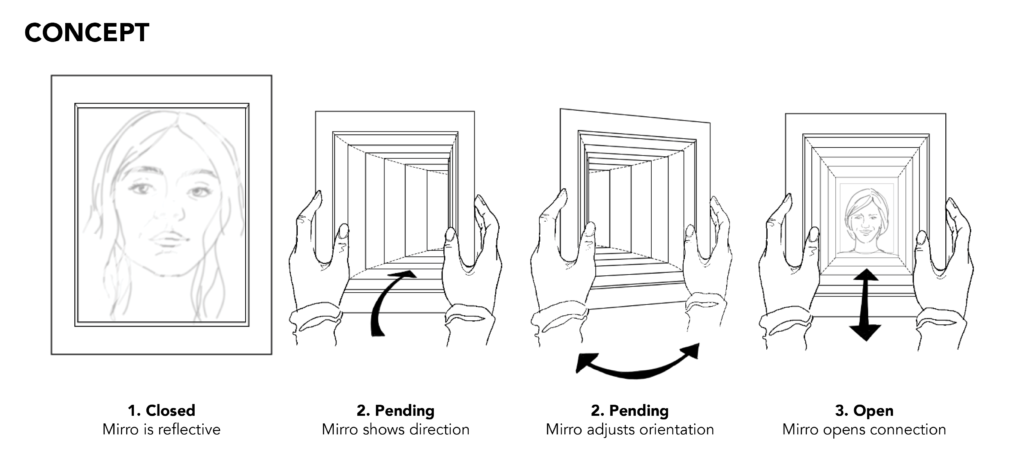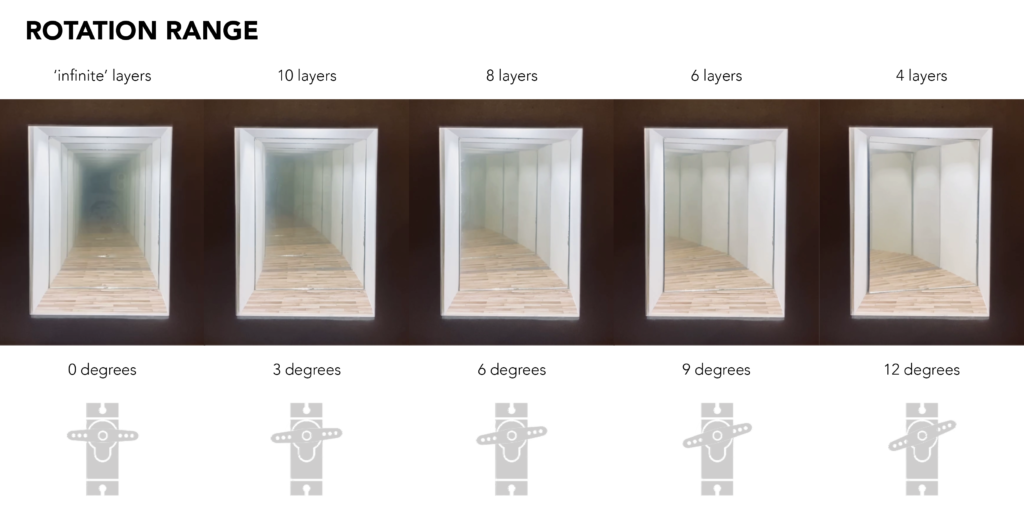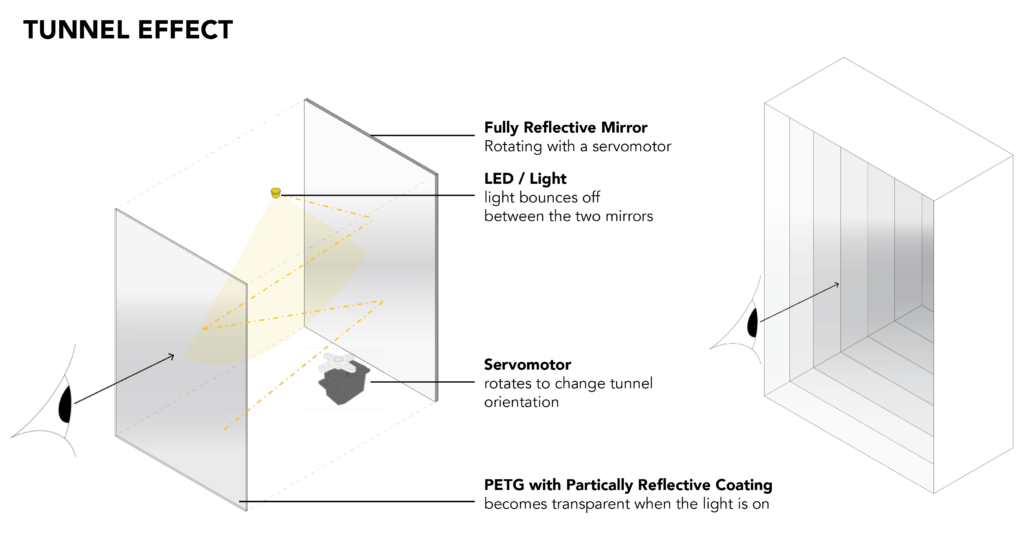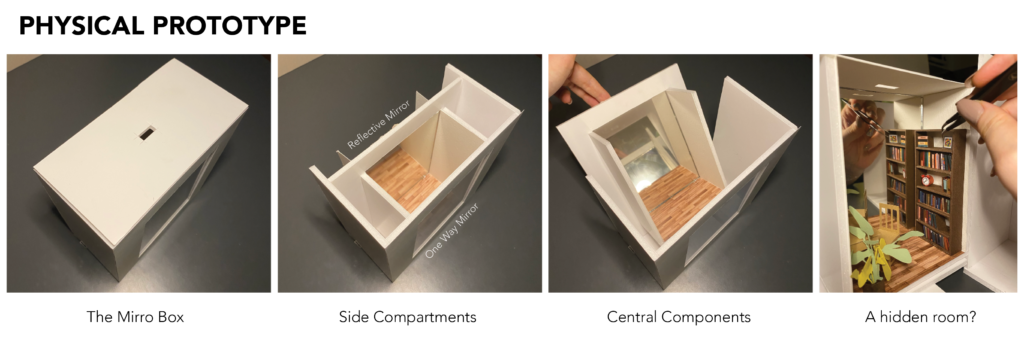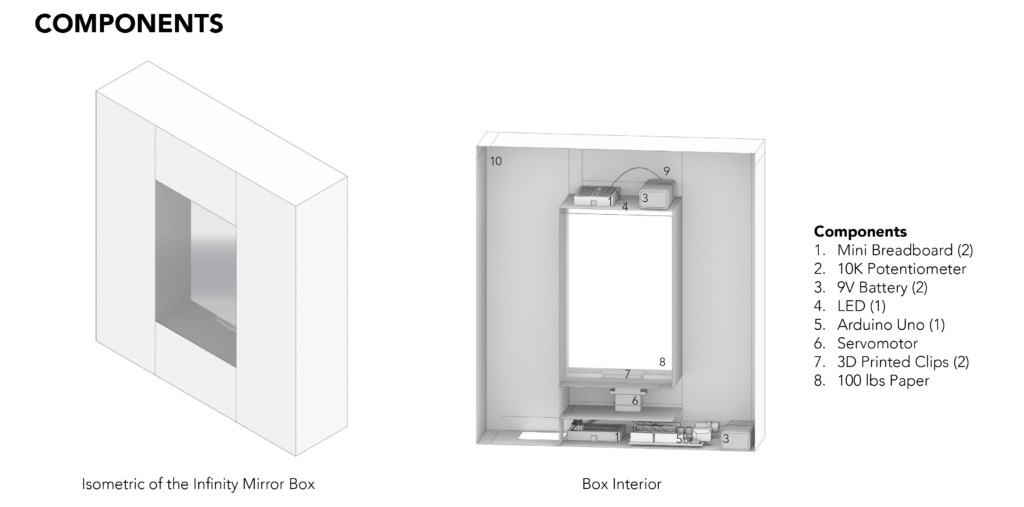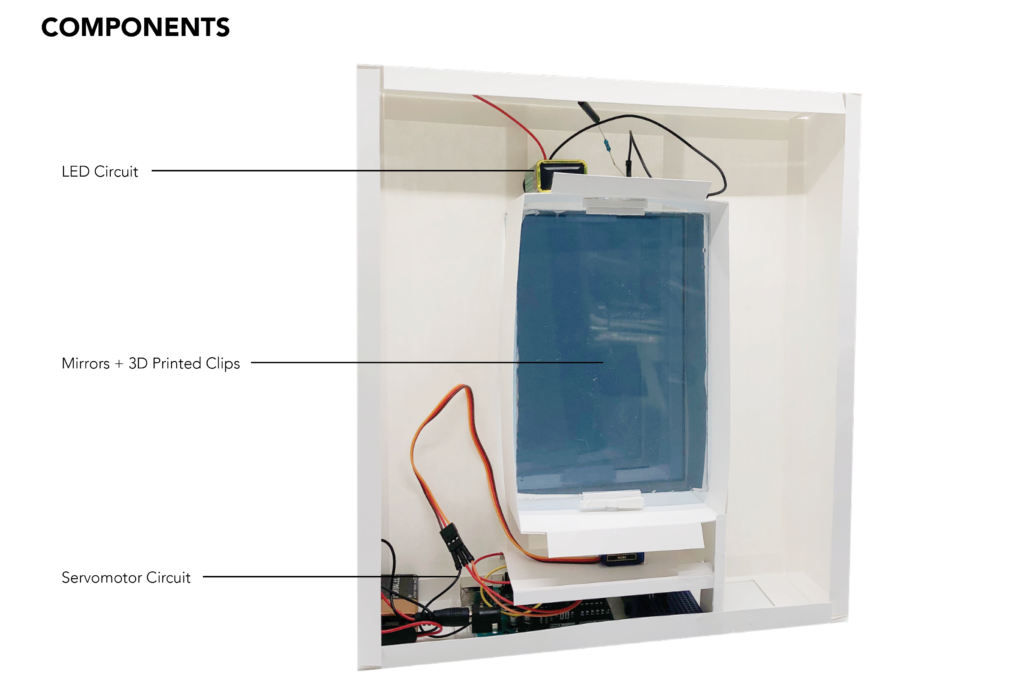MIRRO
GSD VIS-2223: Digital Media: Telepresence, Empathy, and Spatial Immersion (Fall 2020-21)
Students: Lara Avram, Erin Hunt
Instructors: Allen Sayegh, Humbi Song
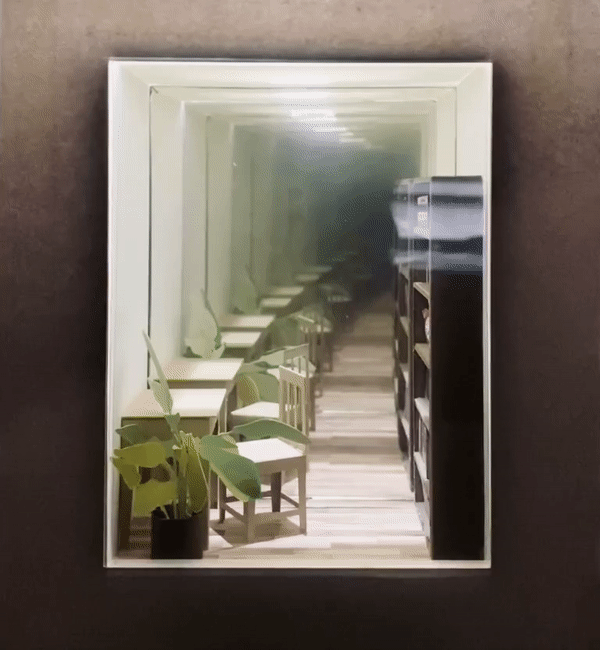
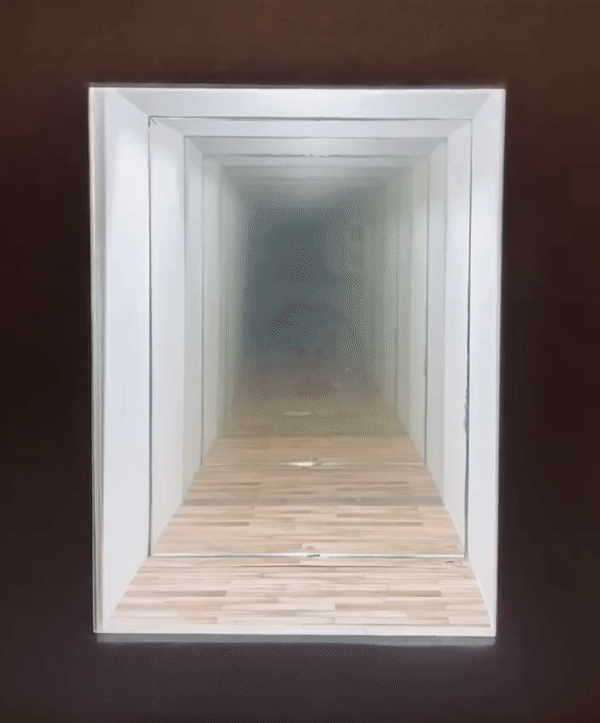
This project started with a simple inquiry: how do you make a tele-periscope at a global scale? How do you peek around the corner when the ‘corner’ is the Atlantic Ocean (since one of the project group partners lives in the UK and the other in the US). Mirro turns an everyday object we all have, a mirror, into a tele-communication device – something that feels imbued with someone else’s presence.
Mirro has three basic states:
-
-
- Reflective (portal closed): it acts as like a normal mirror in your room.
- Infinity Tunnel (portal pending connection): Once you touch the box, the mirror becomes see-through, revealing a tunnel that shows the orientation of the other side. A play of rotating and peeking around the tunnel to see its end culminates when the two tunnels align.
- Video Connection (portal open) – allowing the two sides to enjoy each other’s telepresence.
Mirro’s affordances gradually reveal themselves. The delight comes from the process of exploring its responsive interface – an infinity mirror tunnel that actively reacts to your and the other person’s actions. On your side, rotation of the box allows a better view into the tunnel. On the other end – your rotation moves the tunnel’s direction to the side – prompting the other person to adjust the rotation of their box in response. Thus, Mirro becomes a negotiation between a metaphor (of a complex ‘global’ periscope) and its affordances (simple rotational movements) – these combined form an element of delight and surprise, as one takes part in a playful game of matching movement and orientation.
